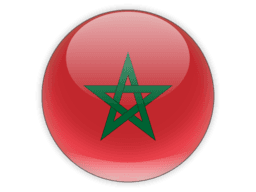
Regions of Morocco
Explore 12 regions
Cities of Morocco
Discover 305 cities across 12 regions
Béni Mellal-Khénifra(38)
Casablanca-Settat(37)
Dakhla-Oued Ed-Dahab(1)
Drâa-Tafilalet(22)
Fès-Meknès(45)
Guelmim-Oued Noun(9)
Laâyoune-Sakia El Hamra(3)
Marrakesh-Safi(30)
Oriental(30)
Rabat-Salé-Kénitra(36)
Morocco is a country located in North Africa, bordered by the Atlantic Ocean to the west and the Mediterranean Sea to the north. It is known for its diverse landscapes, including the Sahara Desert, the Atlas Mountains, and the coastline with its beaches and resort towns.
Morocco has a rich history and culture, with influences from its indigenous Berber population, as well as Arab, African, and European cultures. The official languages are Arabic and Berber, although French is also widely spoken.
Tourism is an important industry in Morocco, with popular destinations including Marrakesh, Fez, Casablanca, and the beach towns of Agadir and Essaouira. Visitors can explore the bustling medinas (old town areas), visit historic landmarks such as the Hassan II Mosque in Casablanca, and take in the vibrant street life and local cuisine.
Moroccan cuisine is known for its use of spices and herbs, such as cumin, paprika, saffron, and mint, and dishes like couscous, tagines (slow-cooked stews), and pastries like baklava and msemen are popular.
Morocco is also known for its handicrafts, including leather goods, ceramics, textiles, and jewelry, which can be found in the markets and souks (bazaars) throughout the country. Visitors can also experience traditional music and dance performances, such as the Gnawa music and dance of the coastal region.
In addition to its cultural attractions, Morocco also has a variety of outdoor activities for visitors, including hiking in the Atlas Mountains, camel trekking in the Sahara Desert, and surfing along the Atlantic coast.
However, it's important to note that Morocco is a conservative Muslim country, and visitors should be respectful of local customs and dress modestly, especially in rural areas. Visitors should also be cautious of petty crime and scams, particularly in tourist areas.
Telephone Code
212
Local Emergency Phone
Ambulance: 15; Fire: 15; Police: 19
Vaccinations
See WHO recommendations
Climate
Mediterranean, becoming more extreme in the interior
Currency (Code)
Moroccan dirhams (MAD)
Electricity/Voltage/Plug Type(s)
220 V / 50 Hz / plug types(s): C, E
Major Languages
Arabic, Berber languages (Tamazight, Tachelhit, Tarifit), French
Major Religions
Muslim 99% (virtually all Sunni, <0.1% Shia), other 1% (includes Christian, Jewish, and Baha'i)
Potable Water
Opt for bottled water
International Driving Permit
Suggested
Road Driving Side
Right
Tourist Destinations
Marrakesh (includes Medina, Majorelle & Secret Gardens, Museum); Hassan II Mosque (Casablanca); Rabat (includes Royal Palace, Udayas Kasbah, Hassan Tower); Fes el Bali; Tangier; Chefchaouen; Volubilis; Atlas Mountains; Ouzoud Waterfalls; Ait Benhaddou
Major Sports
Soccer, kickboxing
Cultural Practices
Using the index finger to ask someone to approach is considered impolite.
Tipping Guidelines
In restaurants, if a service charge has not been added, leave 20-30 dirhams or 10% of the bill. Tipping the bellhop 10-20 dirhams is reasonable. Round up taxi fares. Leave 5-10 dirhams per day for housekeeping.
Souvenirs
Silver and brass tea sets, Argan oil, ceramics/tagine clay cooking pots, leather goods including bobouche slippers, jewelry
Traditional Cuisine
Tagine — chicken stew with spices, vegetables, olives, and preserved lemons served with couscous
Geography
Area
total: 716,550 sq km
land: 716,300 sq km
water: 250 sq km
Climate
Mediterranean in the north, becoming more extreme in the interior; in the south, hot, dry desert; rain is rare; cold offshore air currents produce fog and heavy dew
Natural resources
phosphates, iron ore, manganese, lead, zinc, fish, salt
People and Society
Population
37,067,420 (2023 est.)
Ethnic groups
Arab-Berber 99%, other 1%
Languages
Arabic (official), Berber languages (Tamazight (official), Tachelhit, Tarifit), French (often the language of business, government, and diplomacy); note - the proportion of Berber speakers is disputed
Religions
Muslim 99% (official; virtually all Sunni, <0.1% Shia), other 1% (includes Christian, Jewish, and Baha'i); note - Jewish about 3,000-3,500 (2020 est.)
Population growth rate
0.88% (2023 est.)
Government
Government type
parliamentary constitutional monarchy
Capital
name: Rabat
Economy
Economic overview
lower middle-income North African economy; COVID-19 brought first recession since 1995; reforming state-owned enterprises and expanding welfare system; large tourism, manufacturing, and aeronautics industries; managed debt
Real GDP (purchasing power parity)
$303.336 billion (2021 est.)
Real GDP per capita
$8,100 (2021 est.)
Agricultural products
wheat, sugar beet, milk, potatoes, olives, tangerines/mandarins, tomatoes, oranges, barley, onions
Industries
automotive parts, phosphate mining and processing, aerospace, food processing, leather goods, textiles, construction, energy, tourism
Exports
$47.078 billion (2021 est.)
Exports - partners
Spain 23%, France 19% (2019)
Exports - commodities
cars, insulated wiring, fertilizers, phosphoric acid, clothing and apparel (2019)
Imports
$60.047 billion (2021 est.)
Imports - partners
Spain 19%, France 11%, China 9%, United States 7%, Germany 5%, Turkey 5%, Italy 5% (2019)
Imports - commodities
refined petroleum, cars and vehicle parts, natural gas, coal, low-voltage protection equipment (2019)
International Airports in Morocco
Discover 13 major airports serving Morocco
Mark Morocco as Visited
Add Morocco to your personal travel map and track your journey around the world. Share your adventures and see your progress grow!